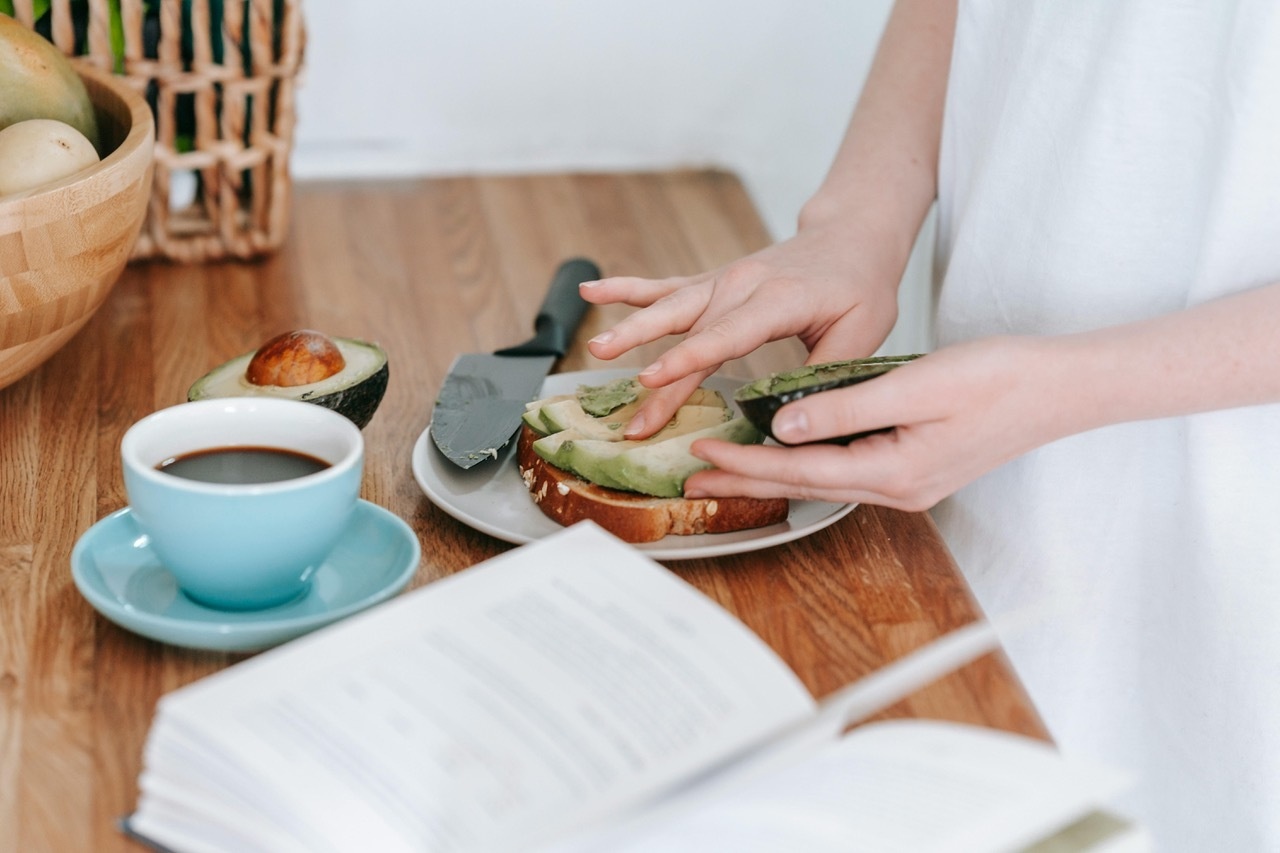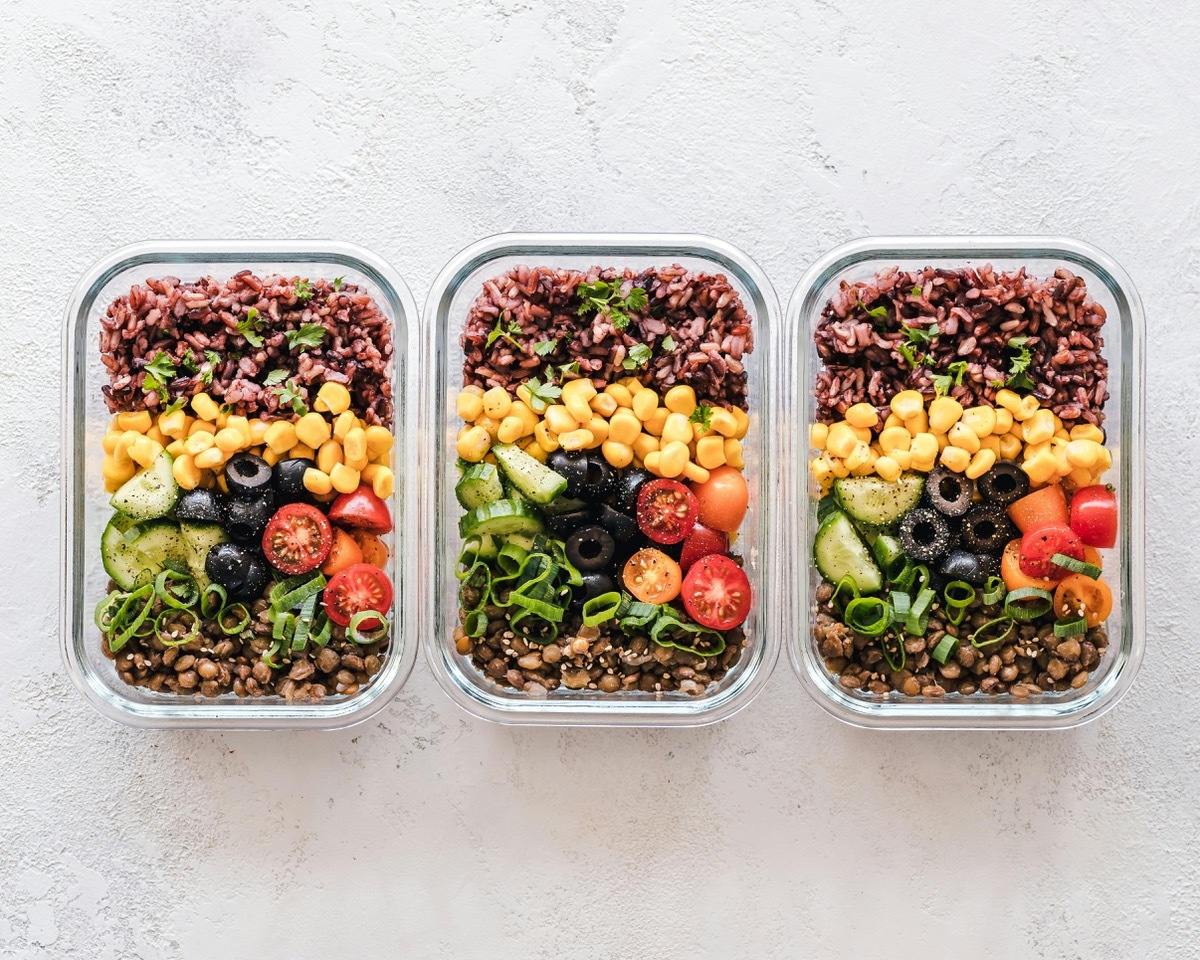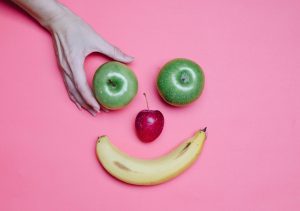Food journaling is a great way to keep track of what and how much you eat and drink over the course of the day. You could also input the time, location, and names of the people you ate the food with in your log entry. It’s a great and highly customisable tool to have in your arsenal when you’re trying to manage your weight or eat healthier!
To take your food journaling to the next level however, you need to go beyond simply logging surface level information. You need to start taking into account what you felt when you decided on your meal, how you physically and mentally responded to the act of eating your food, and finally how you felt after consuming it.
Parsing through your feelings and organising them in such a way that you can write it down coherently can be daunting. We don’t, after all, instinctively catalogue everything that we feel, when we feel it. That’ll be tough to keep track of!
Or is it?
Practicing mindfulness when we eat builds our habit of staying attuned to our physical and emotional selves in the present. Once you get the hang of recognising and organising your feelings and reactions, you’ll find it easier to log in-depth and insightful entries into your food journal.
Benefits of Keeping a Food Journal
Keeping a record of your eating habits and patterns trains your mind to become more aware of your food choices. Thus, it can be beneficial to you in numerous ways. They include:
Helping with weight control and management. The easy access to fast food and snacks coupled with predominantly sedentary lifestyles is doing a number on the waistlines of the general population. Using a food journal could help curb the urge to eat and snack mindlessly because it makes us more aware of what we put in our body. It also allows us to plan out and visualise what we need to eat to make sure our body receives the right nutrients in the right.
Enabling symptom tracking for sensitivities. Certain foods might cause certain sensitivities of our bodies — irritable bowel syndrome (IBS), acid reflux, food allergies, etc. — to flare up. A food journal is oftentimes the best way to figure out which foods your body has a lower tolerance for. Talk to a licensed dietitian about what you’ve logged into your journal so they can evaluate it and tell you which foods and ingredients to limit or avoid completely.
Improving awareness for better portion control. Certain types of food that are considered “bad” aren’t really all that bad — when eaten in moderation. If you want to have your cake and eat it too, keeping track of your portions is a nice compromise that won’t put your health at greater risk. Practicing your portion awareness also trains you not to overeat or eat mindlessly.
Staying on track with personal health goals. Not everyone needs to drastically change their entire diet. However, you might still want to achieve some personal health-oriented goals like consistently eating a set amount of fiber-rich foods for the week. A food journal is an easy way to organise your record, keep you honest about what you eat, and see how close you are to hitting your goal.
Identifying how food affects your mood. Although it’s not discussed often, it’s undeniable that human beings have an intimate relationship with food and drink. It’s what sustains us and gives us the energy to thrive and make something of the time we have. It’s important to pay closer attention to how the food we put into our bodies affect how we feel, from the emotions it evokes prior to eating all the way to how it makes us feel after the meal. Does it make you feel good from the moment you lay your eyes on it and keep you satisfied for the next couple of hours? Or does the good feeling only come at the start? Perhaps you are numb to what you consume? By examining these initial and persisting feelings and getting to the reason of why we feel them towards the act of eating, we become more aware of our state of humanity.
Using a Food Journal Mindfully
If you’re just starting out on your mindful food journal journey and feel a little overwhelmed, you can begin with a basic log comprised of five categories:
- Type of food – all you need to do here is detail what you ate and categorise it. It can be anything as broad as “breakfast, lunch, and dinner” or you can organise each type into its food groups (carbohydrates, proteins, and fats). The important part is getting into the swing of things. Eventually, you’ll settle on a way of typing that works best for your goals. But in the meantime, you can just focus on creating your very first entry!
- Portion size – the key to a blissful life is moderation, and so that’s what you need to achieve with your food portions. When you start a food journal be sure to record how much you eat or drink. Once you have enough entries to establish a consumption pattern, you can consciously adjust your eating habits into a healthier but still reasonable one.
- Time and place – we don’t eat and drink in a vacuum. We eat when we are hungry and drink when we are thirsty; We eat more to celebrate or when we are comfortable with the place or people we’re with; We eat erratically when stressed. The where’s and when’s play a key role in our food consumption, so be sure to take note of it and stay aware of your surroundings.
- Appetite and hunger levels – a basic rule of being alive is that we eat to keep that state going a little longer. When you create a log on your mindfulness food journal, don’t skip the part where you detail your appetite and hunger levels. Did you eat that snack because you were hungry or were you just bored? It’s easy to forget this little detail when mindlessly snacking, but a food journal entry will force you to confront bad habits and behaviours that’ve been part of you for so long that you take them for granted.
- Feelings evoked – the way our body responds to food is such a visceral thing. From the first time a dish’s aroma enters our nose to the last morsel of food disappearing into our mouths, the act of eating could make any number of sensory experiences occur. With a food journal entry to keep track of it, you’ll be able to identify the types of food and drink that bring you joy and satiety over a longer period and the types that only make you feel good initially. The next time the choice over what to eat comes up, you’ll be ready with the right choice.
Tips for New Mindful Journal Users
Daftein wants your mindful eating record to succeed. So, here’re 5 tips that could help make your journaling experience about food all the more fun and fulfilling:
Establish reasonable goals. The point of journaling is to gather data and identify patterns that you can reliably improve upon. It’s not about making up an outrageous goal that you think you should achieve. Moreover, it’s not a competition with other people who keep mindful food journals. This is about you, your relationship with food, and how you are going to turn your bad eating habits around.
Find the right journaling medium. Some tech-savvy people would prefer to keep their logs on an app. Others prefer to manually write down the details of their meals, perhaps with their favorite pen. Either way is good, as long as you’re putting in the correct details and are doing so consistently. If you have another idea you want to try out for your journaling medium then that’s good too! Go for it!
Be detail-oriented, write down everything you can. Never trust your memory to be able to perfectly recall things, especially what you may have eaten while half asleep or distracted. Make time to jot down what you eat and what your personal experience during that meal was so you don’t miss a detail. Ideally, you’d do this right after while the memory is still fresh in your mind.
Practice consistency, honesty, and accuracy. Diligently logging in the details of your eating experience doesn’t matter if the data doesn’t have integrity. Succeeding at keeping a mindful food journal means that you have to be honest with yourself so that you can write down the truth on your logs. Being honest with what you ate and most of all how you felt before, during, and after, helps you become more aware of how you relate with food.
Remember the 3 Rs (Reflect, Replace, Reinforce). All the data you gather in your meticulously detailed journal isn’t just for show. It’s a tool you use to become a better, more mindful and aware human being. So, set aside a time and place for you to go over your notes and reflect on them. Ask yourself if you observed any negative patterns that you’d be better off replacing with something much healthier. Then, gear you journaling in the future towards reinforcing the new, positive behaviour.
Learn to Eat Mindfully with a Nutrition Mentor
Writing down what you consume can become your healthiest food habit when done correctly. You’ll reap the physical and mental benefits of being able to fully appreciate the act of sustaining yourself as well as be able to eat nutritious food to help regulate your moods. If you’re ready to change your life one bite and sip at a time, seek the help of Daftein’s nutrition mentor and life coach. We offer practical advice on how to eat and drink with mindfulness.








